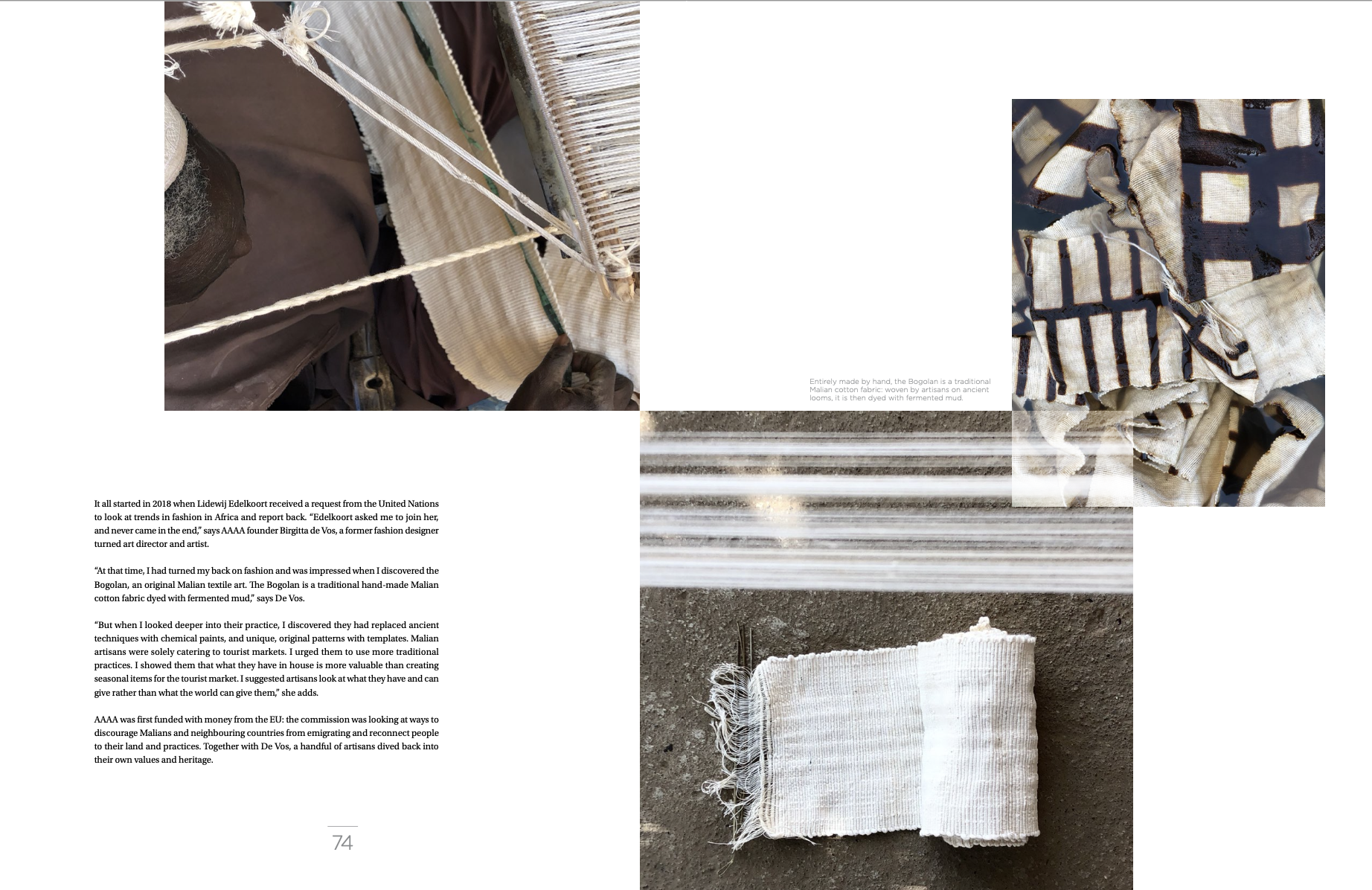BLLNR The Impact Issue 34
Beautiful article about AAAA Textile Totems and the process of making them.
Text: Clara Le Fort. Photography: Birgitta de Vos.




In a world increasingly dominated by algorithms and mass production, AAAA—Atelier Autodidacts Anti-Algorithms—stands as a testament to the power of traditional craftsmanship. Featured in BLLNR’s Impact Issue 34, the article by Clara Le Fort, accompanied by the evocative photography of Birgitta de Vos, delves into the story of this remarkable collective of Malian artisans who are preserving the age-old art of Bogolan textiles.
AAAA was founded in 2018 when artist and former fashion designer Birgitta de Vos was invited to Mali as part of a United Nations initiative to explore trends in African fashion. What she discovered was both inspiring and concerning. The traditional Malian Bogolan—handmade cotton fabric dyed with fermented mud—was being replaced with chemically dyed fabrics catering to the tourist market. Ancient techniques were disappearing in favor of commercial shortcuts. De Vos saw an opportunity to encourage artisans to reconnect with their roots, valuing their own heritage over global trends.
With initial funding from the EU, AAAA was formed as a cooperative of artisans committed to reviving and sustaining authentic Malian textile traditions. The process of making a Bogolan is entirely manual and deeply labor-intensive, from picking and spinning the cotton to weaving, dyeing, and hand-painting each unique piece. Natural dyes are derived from locally grown herbs, while mud from the Niger River is used to create intricate patterns. Traditionally, these textiles hold spiritual significance and are believed to possess protective qualities.
Today, AAAA consists of 50 artisans, men and women of all ages, who take great pride in their craft. Producing around 1,800 pieces annually, they focus on quality over quantity, resisting the pressures of fast production. The process is slow and seasonal—rain affects drying times and alters colors—but this organic rhythm is part of what makes each piece so special. AAAA’s mission is not just to preserve an art form but to ensure artisans achieve financial independence and work in better conditions. Women, in particular, benefit from the flexibility to spin cotton from home while supporting their families.
AAAA’s approach is about empowerment, not dependency. By mentoring artisans to take full ownership of their ateliers, the collective fosters a sustainable future, proving that slow design can be both beautiful and transformative.
